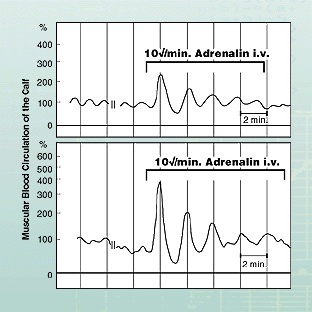As an example for a short wave reactive periodic illustration 23 shows the plot of the blood circulation in calf muscle of two subjects whose metabolic balance in the musculature was disturbed by infusion of a vascular active hormone (adrenalin). While in a condition of rest the muscular blood circulation varies spontaneously in a 1-min.-rhythm, a 2-minute reactive periodic is triggered by the disturbance whose swings are initially much greater, but then decrease with continuing compensation, falling back again into the spontaneous 1-min.-rhythm.

